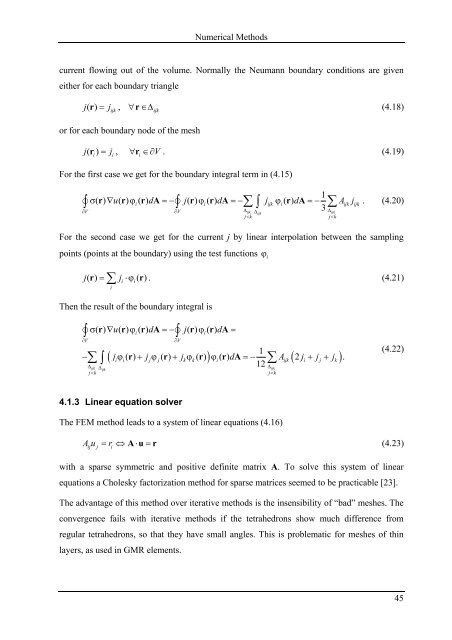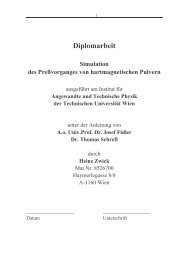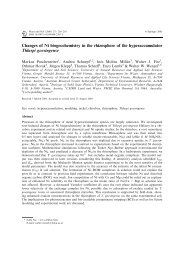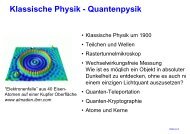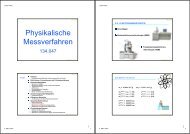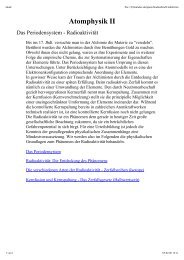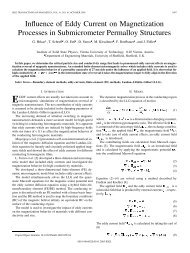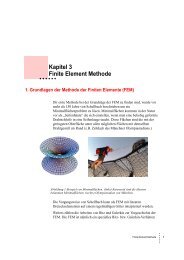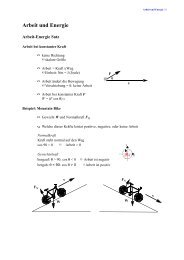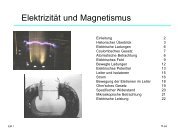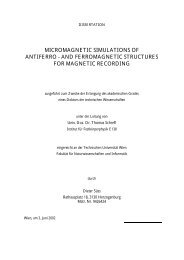Read Back Signals in Magnetic Recording - Research Group Fidler
Read Back Signals in Magnetic Recording - Research Group Fidler
Read Back Signals in Magnetic Recording - Research Group Fidler
Create successful ePaper yourself
Turn your PDF publications into a flip-book with our unique Google optimized e-Paper software.
Numerical Methods<br />
current flow<strong>in</strong>g out of the volume. Normally the Neumann boundary conditions are given<br />
either for each boundary triangle<br />
j() r = j , ∀r ∈Δ<br />
(4.18)<br />
ijk ijk<br />
or for each boundary node of the mesh<br />
j( r) = j , ∀r ∈∂V<br />
. (4.19)<br />
i i i<br />
For the first case we get for the boundary <strong>in</strong>tegral term <strong>in</strong> (4.15)<br />
1<br />
σ() r ∇u() r ϕ () r dA=− j() r ϕ () r dA=−∑ j ϕ () r dA=− ∑A<br />
j<br />
3<br />
�∫ � ∫ ∫<br />
. (4.20)<br />
i i ijk i ijk ijk<br />
∂V ∂V Δijk Δijk<br />
j< k<br />
Δijk<br />
j< k<br />
For the second case we get for the current j by l<strong>in</strong>ear <strong>in</strong>terpolation between the sampl<strong>in</strong>g<br />
po<strong>in</strong>ts (po<strong>in</strong>ts at the boundary) us<strong>in</strong>g the test functions i ϕ<br />
∑<br />
j() r = j ⋅ϕ () r . (4.21)<br />
i<br />
i i<br />
Then the result of the boundary <strong>in</strong>tegral is<br />
�∫ �∫<br />
σ() r ∇u() r ϕ () r dA=− j() r ϕ () r dA=<br />
i i<br />
∂V ∂V<br />
1<br />
−∑ ∫ ( jiϕ i() r + jjϕ j() r + jkϕk() r ) ϕ i() r dA=− ∑Aijk<br />
( 2 ji + jj + jk)<br />
.<br />
12<br />
Δijk Δ<br />
Δ<br />
ijk<br />
ijk<br />
j< k j< k<br />
4.1.3 L<strong>in</strong>ear equation solver<br />
The FEM method leads to a system of l<strong>in</strong>ear equations (4.16)<br />
(4.22)<br />
Au ij j = ri<br />
⇔ Au ⋅ = r (4.23)<br />
with a sparse symmetric and positive def<strong>in</strong>ite matrix A. To solve this system of l<strong>in</strong>ear<br />
equations a Cholesky factorization method for sparse matrices seemed to be practicable [23].<br />
The advantage of this method over iterative methods is the <strong>in</strong>sensibility of “bad” meshes. The<br />
convergence fails with iterative methods if the tetrahedrons show much difference from<br />
regular tetrahedrons, so that they have small angles. This is problematic for meshes of th<strong>in</strong><br />
layers, as used <strong>in</strong> GMR elements.<br />
45


